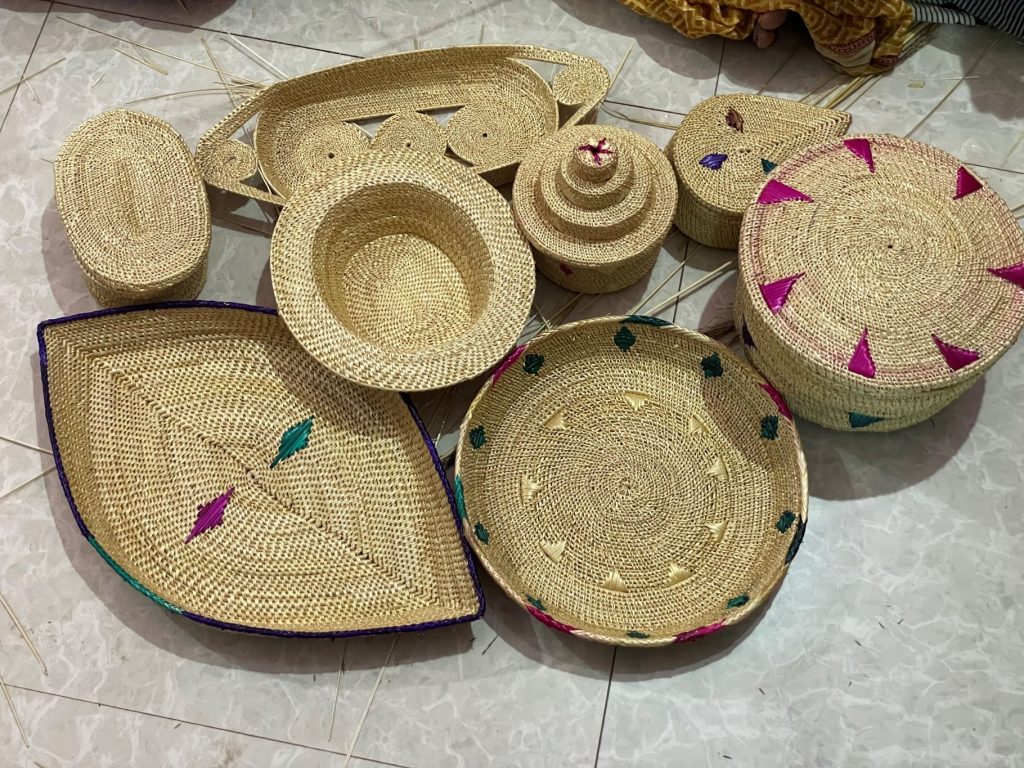Gopalpur Tussar and arts and crafts of Jajpur District
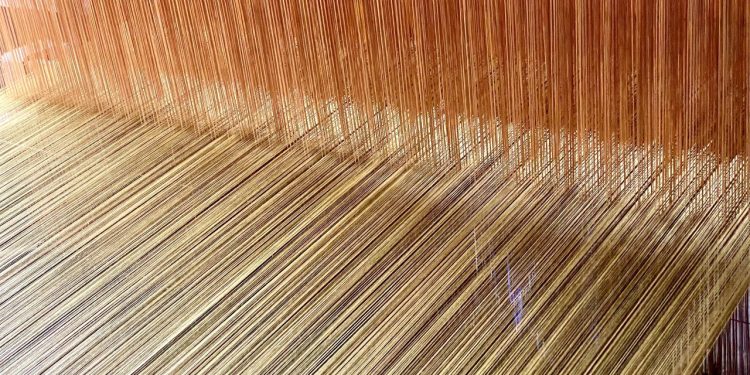
” Almost every region in Odisha has a village called Gopalpur and we are not even talking about the famous Gopalpur by the Sea. But this Gopalpur in Jajpur District is famous for the Gopalpur tussar, ” says our guide Sumanta ji as we walk around the idyllic village. The musical strains echo through the dusty lanes of the village. It’s windy as the trees sway to the rhythm, the leaves rustle against each other and the sun is a little kind as I walk past brightly painted homes with murals on the walls. A young woman clad in a bright red saree shyly poses for me with the background of her artwork. This form of painting is called Jhoti Chita and it reminds me of the Kolams from my ancestral state of Tamil Nadu made with a paste mixed with rice and water.

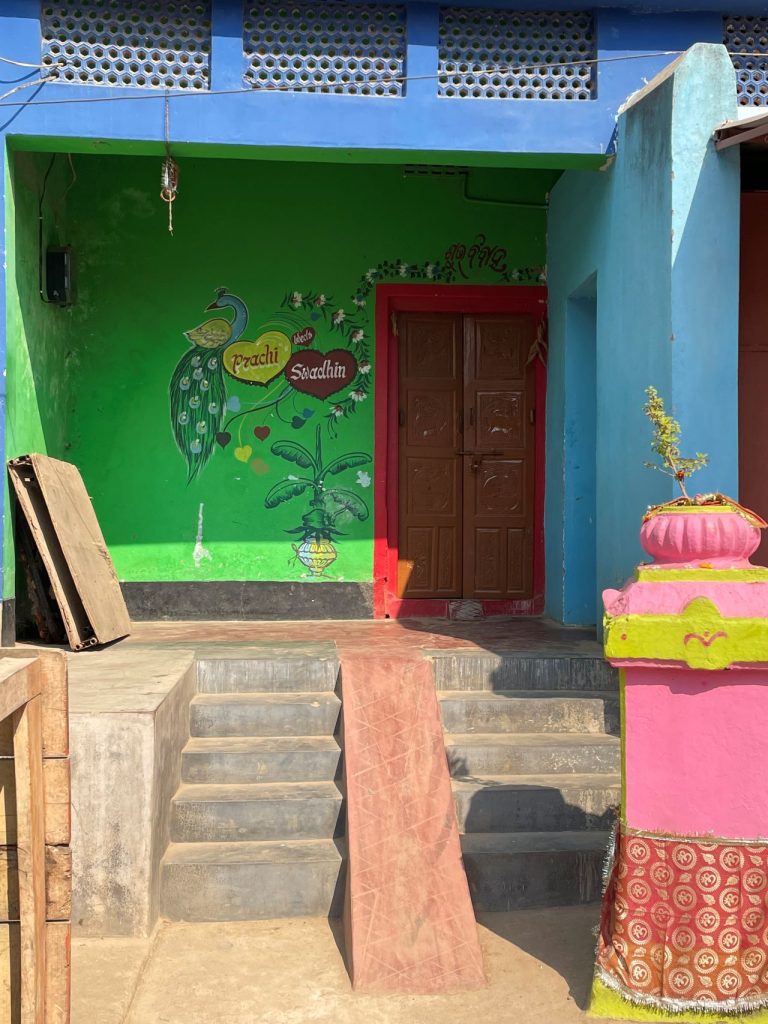
“The motifs with geometric patterns are not mere art pieces but are believed to be a symbolic representation of the relationship between the mystical and the material” adds Sumantaji. Every house has a colourful and cheerful look. Some of them however have different artwork. The walls become invitation cards as the entire village is invited to a wedding of a couple.
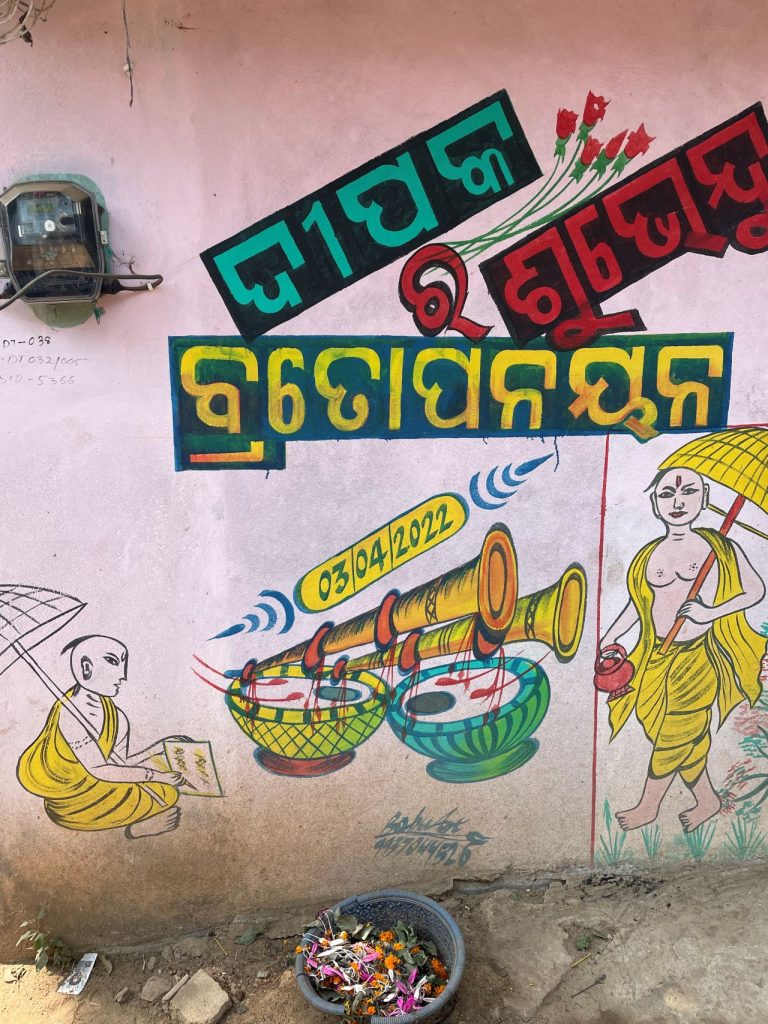
As I walk around, I take in the towering Vimana of a temple standing out amidst the coconut trees, while a painted horse greets me in front of another temple dedicated to one of the guardian deities of the village, reminding me again of the Ayyanars of Tamil Nadu and the painted terracotta horses in front of temples in Chettinadu.
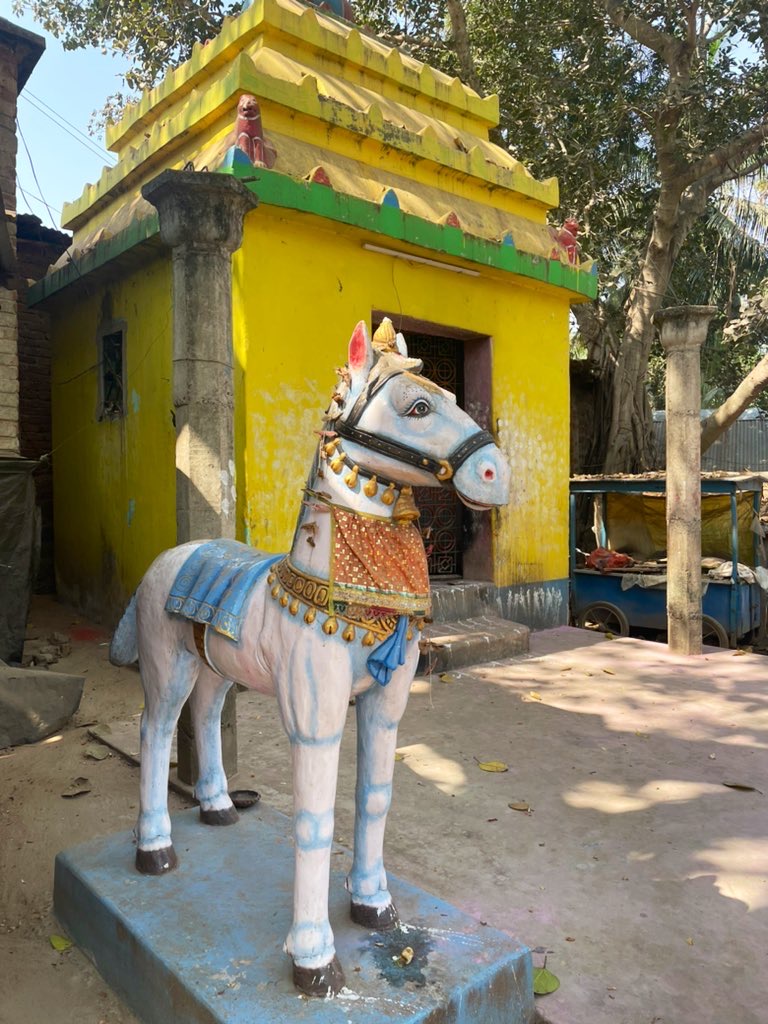
Meanwhile, the children are back from school adding to the vibrant hues with their pink and navy blue uniforms. As the lanes get narrower and the houses more traditional, I can hear the characteristic rhythmic sounds of weaving from the looms as we walk into one of the rooms.
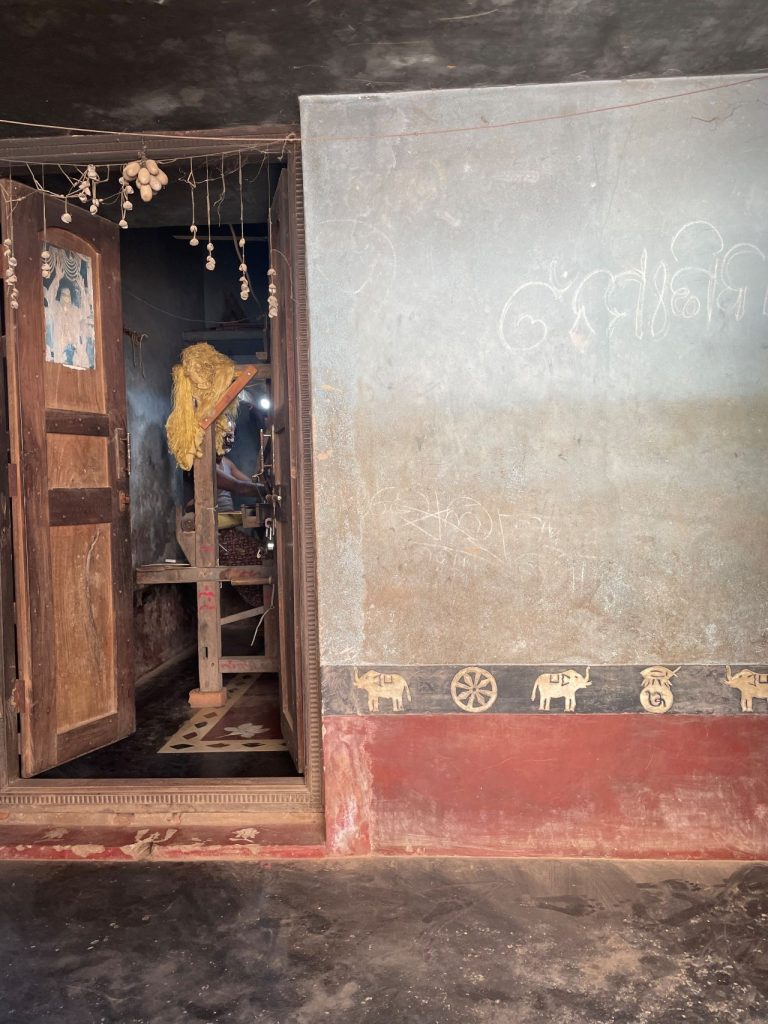
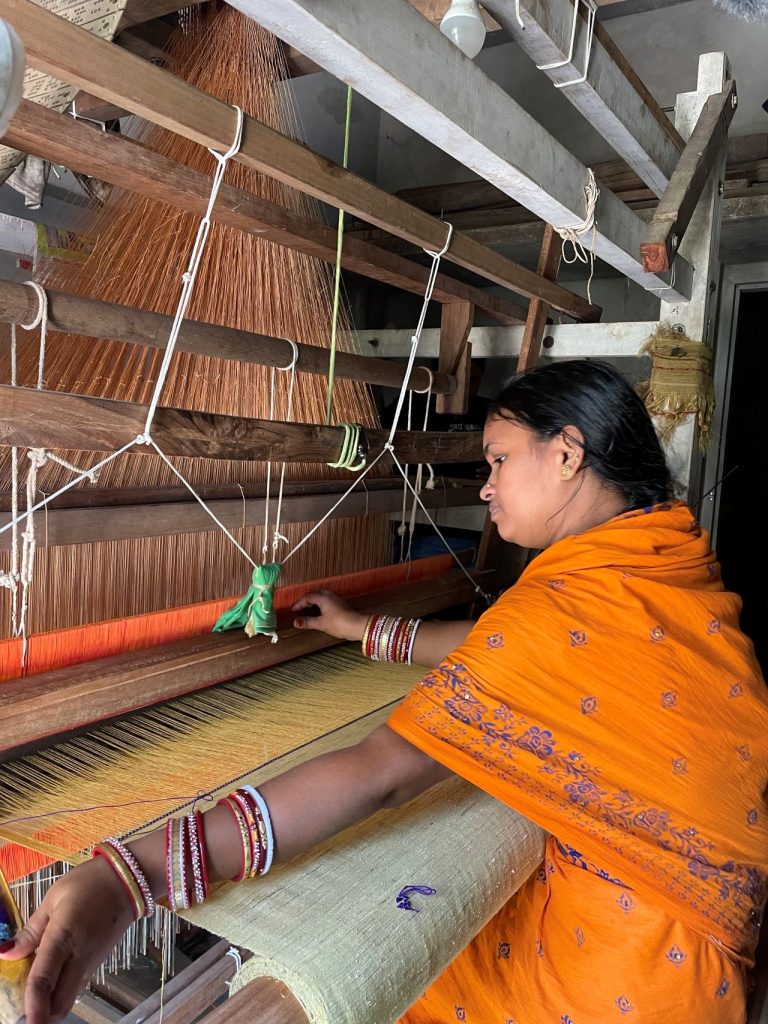
The echoes get louder as we see rooms filled with weavers who are deftly working on the warp and the weft, magically weaving silken threads together into shimmering tussar silk fabrics. Gopalpur is essentially a village filled with generations of weavers mainly known for weaving tussar silks and Gopalpur tussar even has a Geographical Index (GI) differentiating it from the other Gopalpurs of Odisha.
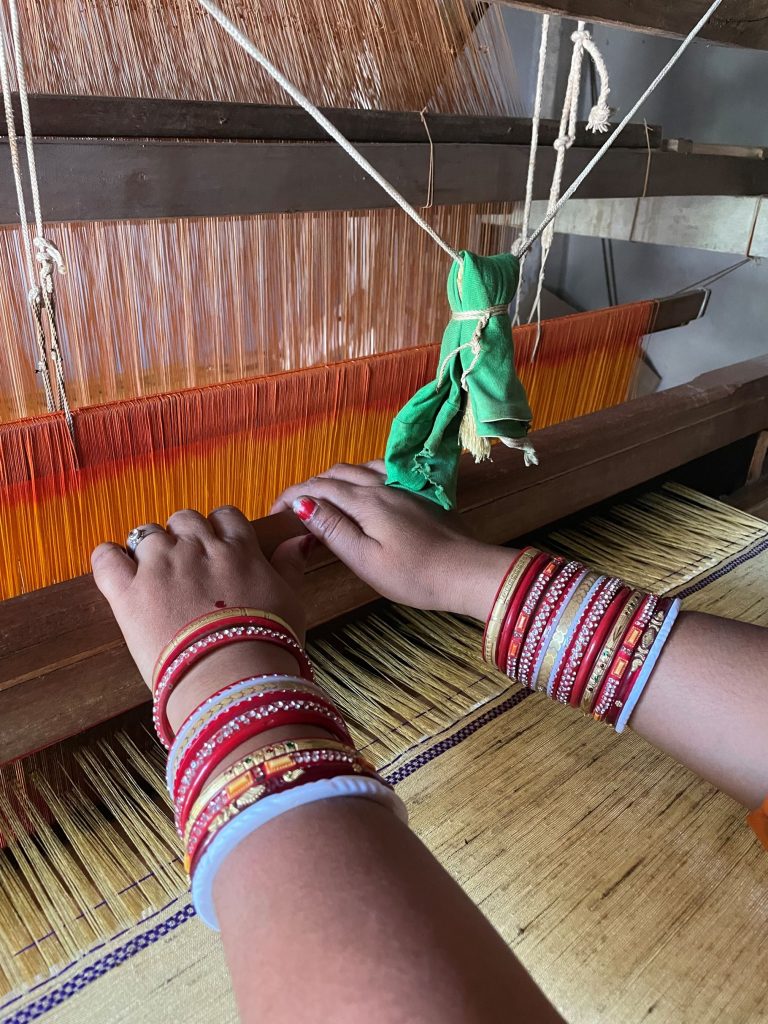
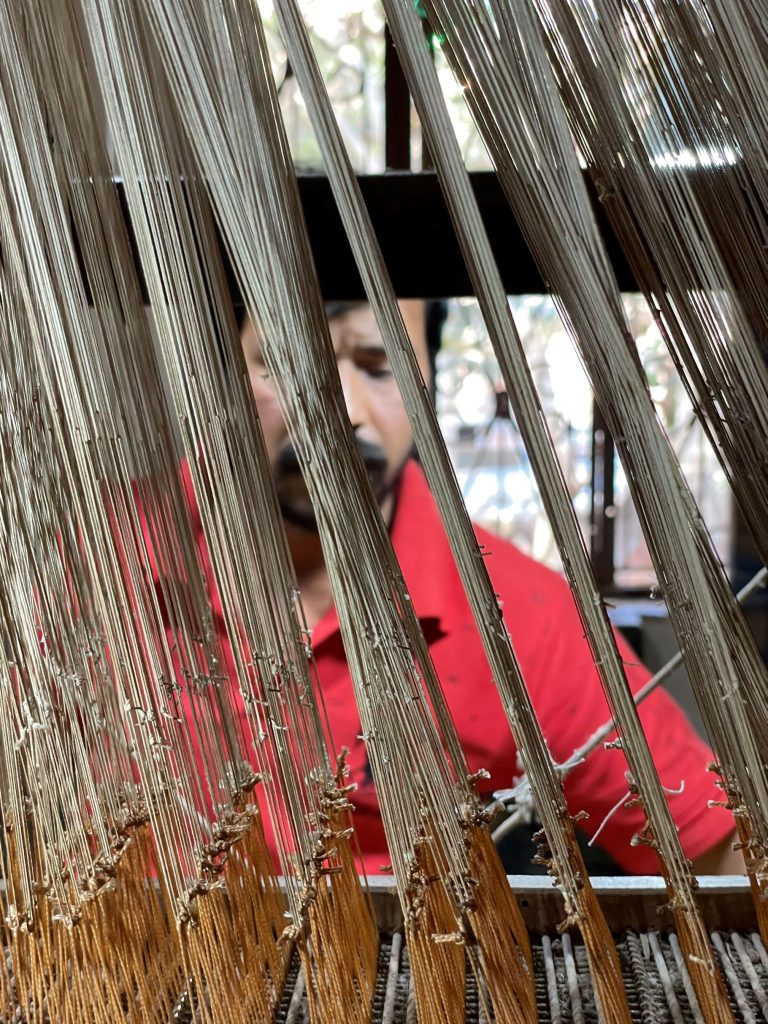
Every loom makes its own music and tells a story of a weave and a pattern. Blending threads together, creating motifs, and weaving fabrics into colourful and contrasting hues, the weavers are lost in their craft. The sun shines on the lustrous threads through the open windows while I can see a weaver’s face through a yarn of threads as he looks upon his loom with single-minded focus.
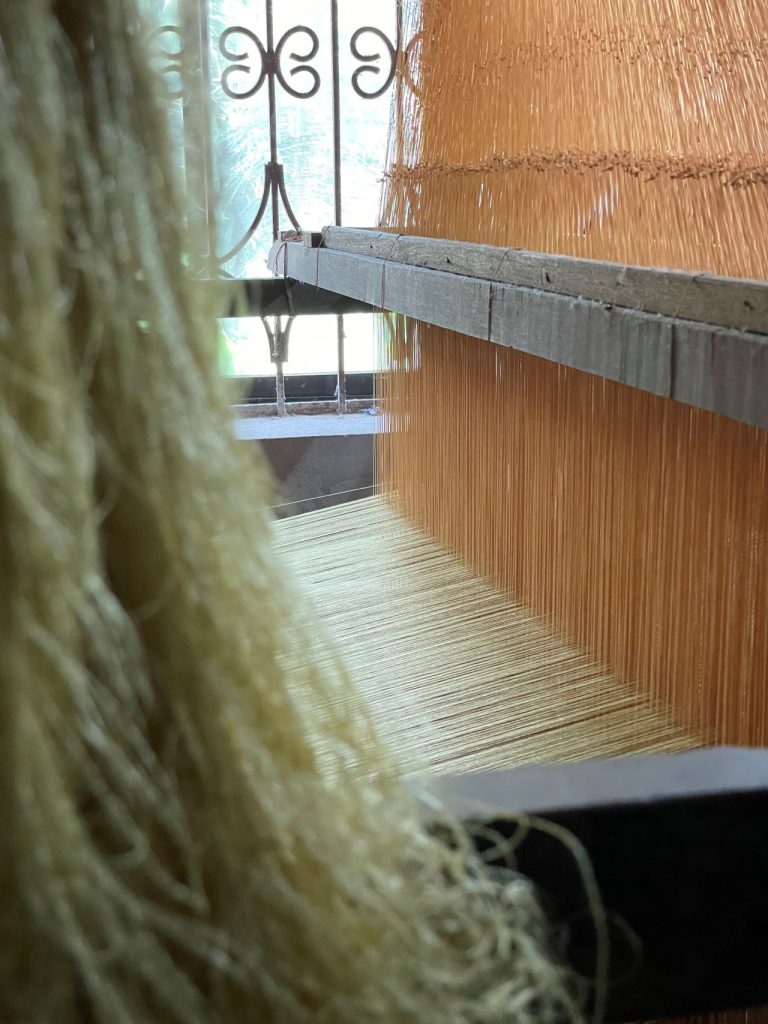
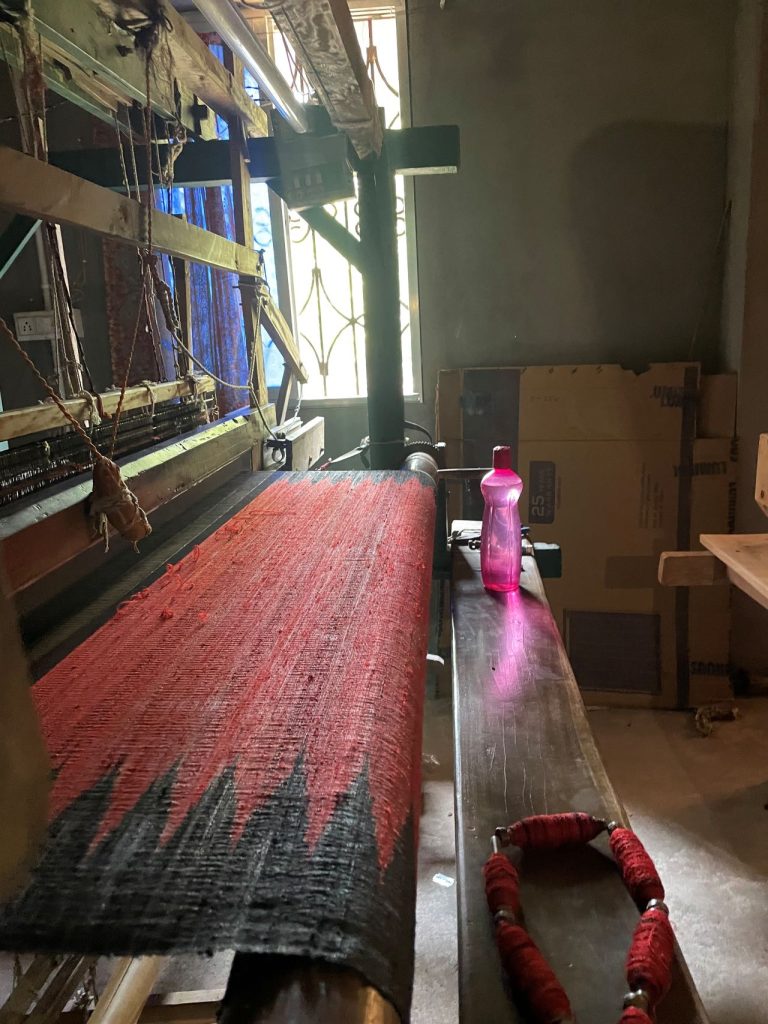
Gopalpur is believed to have over 1700 registered weavers and almost everyone here is an artisan. There are local communities and self-help groups like AdiShakti while the marketing and distribution are managed by ORMAS – Odisha Rural Development and Marketing Society as well.
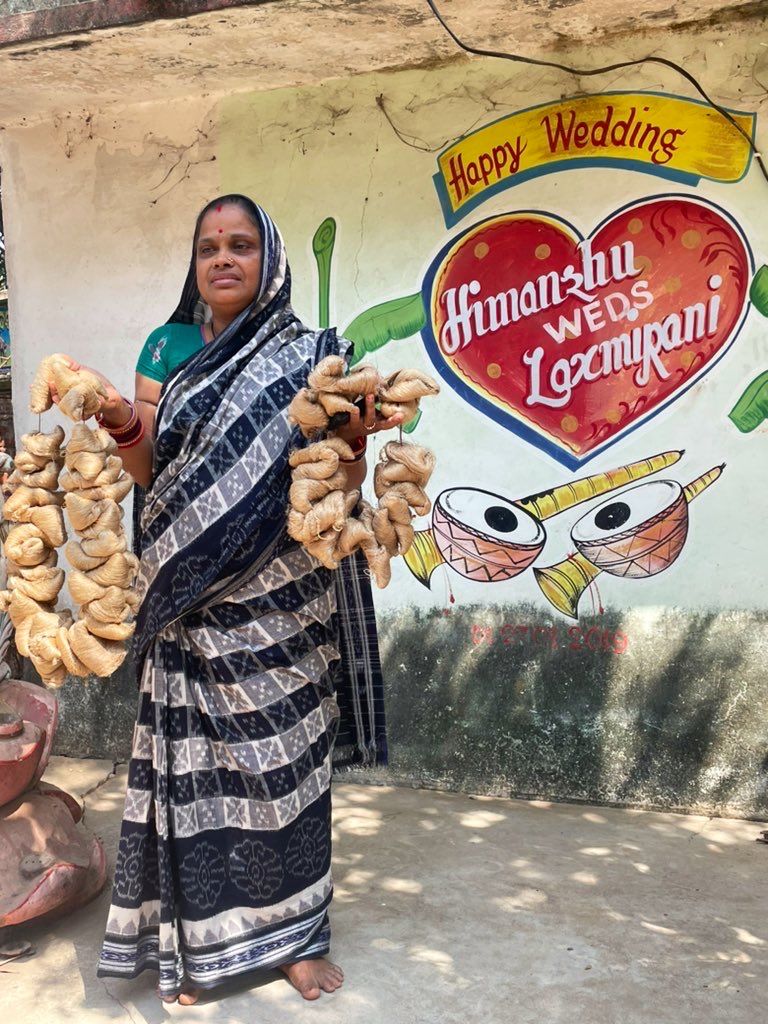
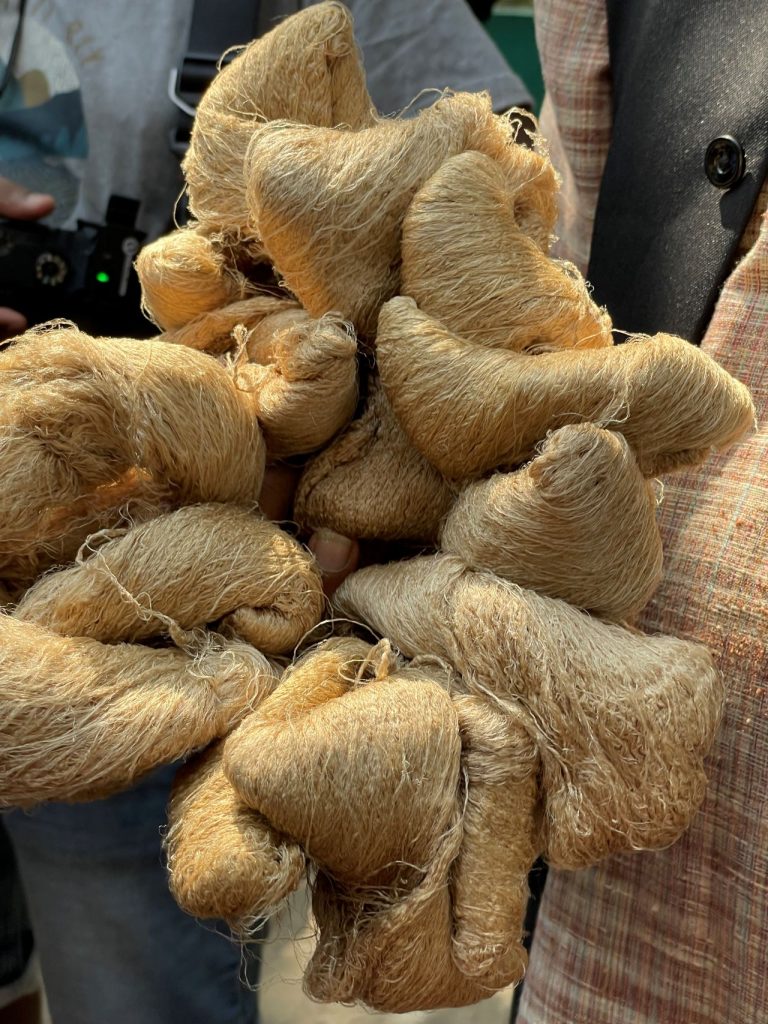
We speak to a few weavers who proudly showcase the process to us as we see the cocoons which are unfurled into silk fibre and then transformed into beautiful stunning sarees, and scarves among other fabrics. Silk is produced by silkworms when they form cocoons and there are different species of silkworms,. The soft fibres of the cocoon of the tasar moth or the Antheraea mylitta moth found usually in the region of Sukinda, known for its chromite ore mines are then unravelled to produce silk threads which are then dyed and woven into shimmering, smooth, and delicate tussar silk fabrics.
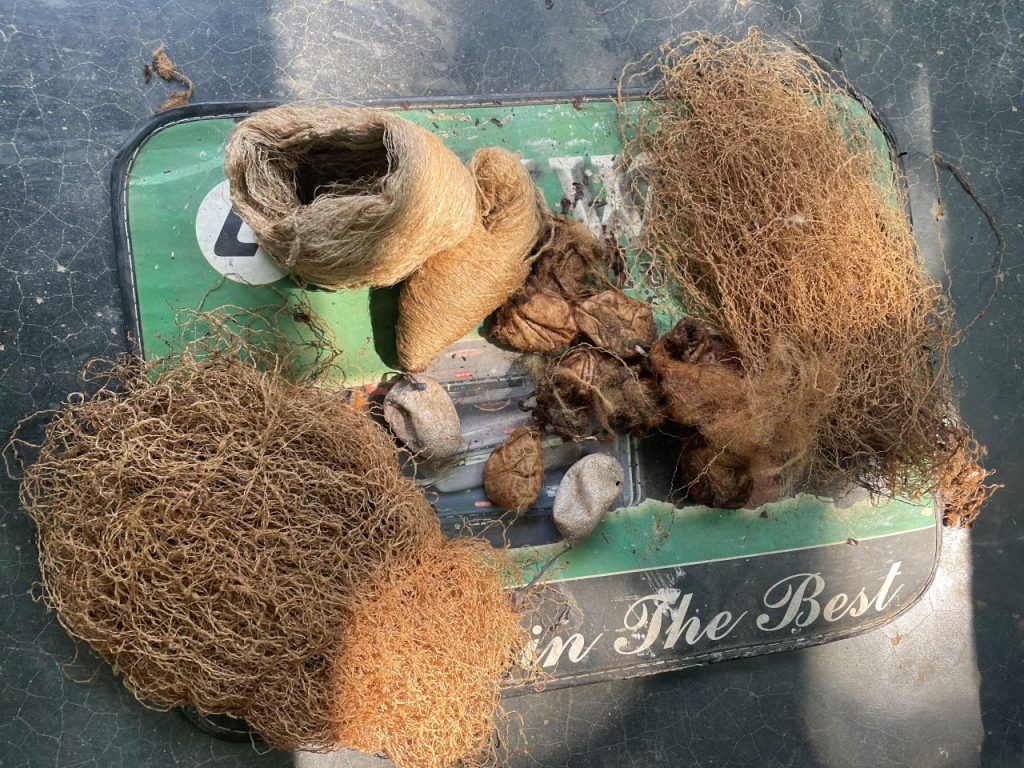
Sukinda is barely 30 kms from the Gopalpur cluster, but the breed of the moth is now endangered and is on the brink of extinction. A few corporates and social enterprises have joined together to propagate nurseries of the Arjun and Asan trees so that these moths can feed on their leaves and more cocoon production centres have been developed as well.

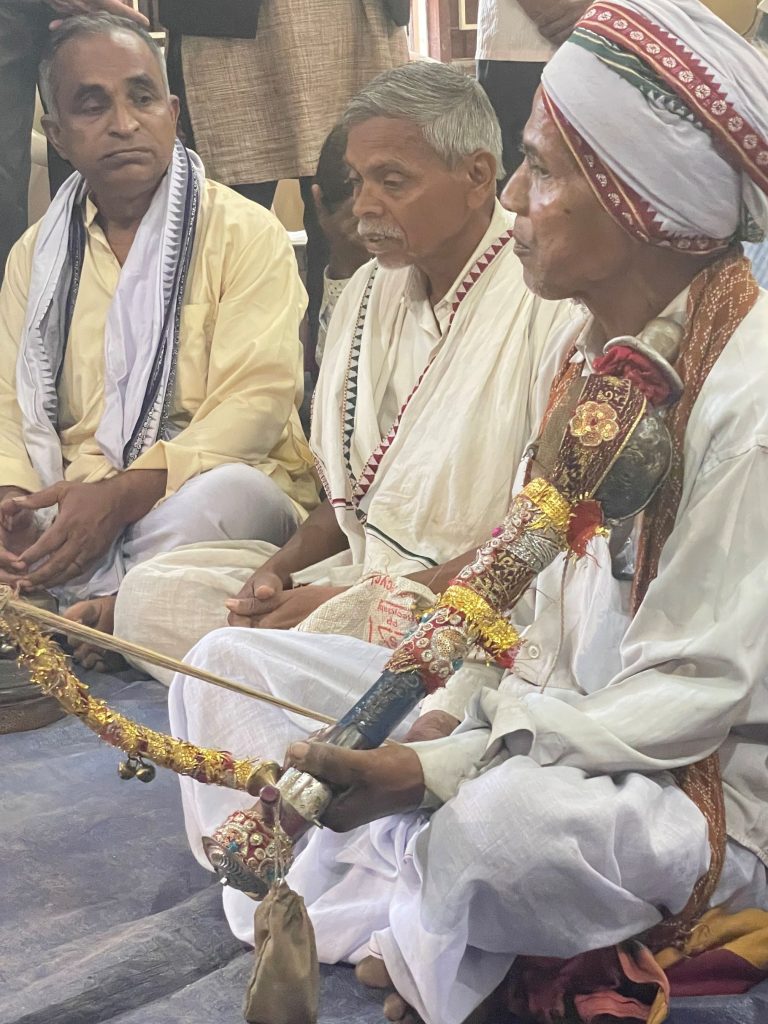
Jajpur District is a home of skilled craftsmen and women. There are thousands of stone sculptors, golden grass weavers, bamboo grass artisans, and terracotta craftsmen besides potters, painters, musicians, singers, dancers, tailors specializing in theatrical costumes, and folk artists and performers. While Gopalpur tussar is one of the key highlights of the village, there are several artisans and musicians here as well. Earlier in the day, we were given a traditional greeting by the women in a loud and cheerful call called the Hulahuli and we were ushered into a room filled with the elders clad in a sea of white. Amidst them was a wizened old man called Alek Das Ji, passionately clinging on to a musical instrument called Kendera, As he performed, the melancholy of the music overpowered all of us. His deep-throated voice touched us, as he sang passionately, calling out an entreaty to the deities. Perhaps he was asking the gods, why they had bestowed him with so much talent, only to be lost and forgotten in this little hamlet. Alek Das Ji was the only musician in the village who plays the Kendera, an instrument made from coconut shells, bamboo, and the skin of a monitor lizard, believed to be found in these parts. He has been performing since he was a young boy, having learnt it from his father. Sadly many such musicians are reduced to penury and are forced to become mendicants and the music and the musical instruments are long lost like the Khanjari, a circular drum-like percussion instrument made with local wood and the skin of the monitor lizard too.
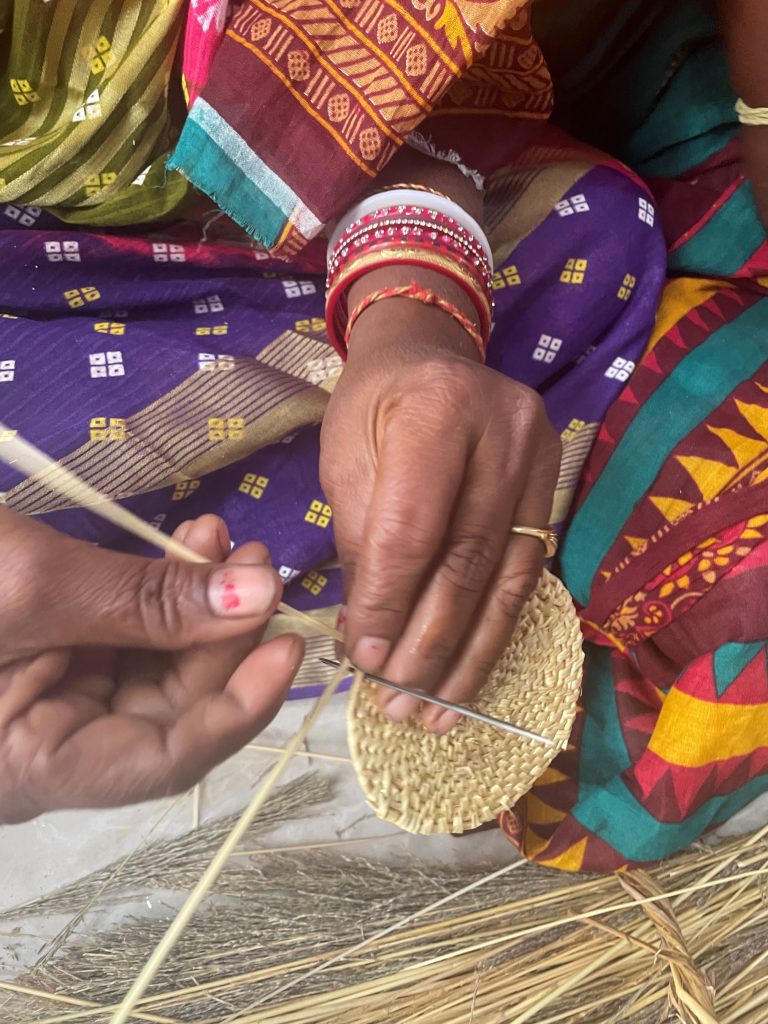
We move on from village to village, meeting more artisans and listening to stories. Our next halt is at Antia, where we are again greeted by a bevy of colourful women, but this time, they are focussed on showcasing their creative skills. Weaving their magic on golden grass, they transform long stalks of tawny grass, into beautiful crafts.
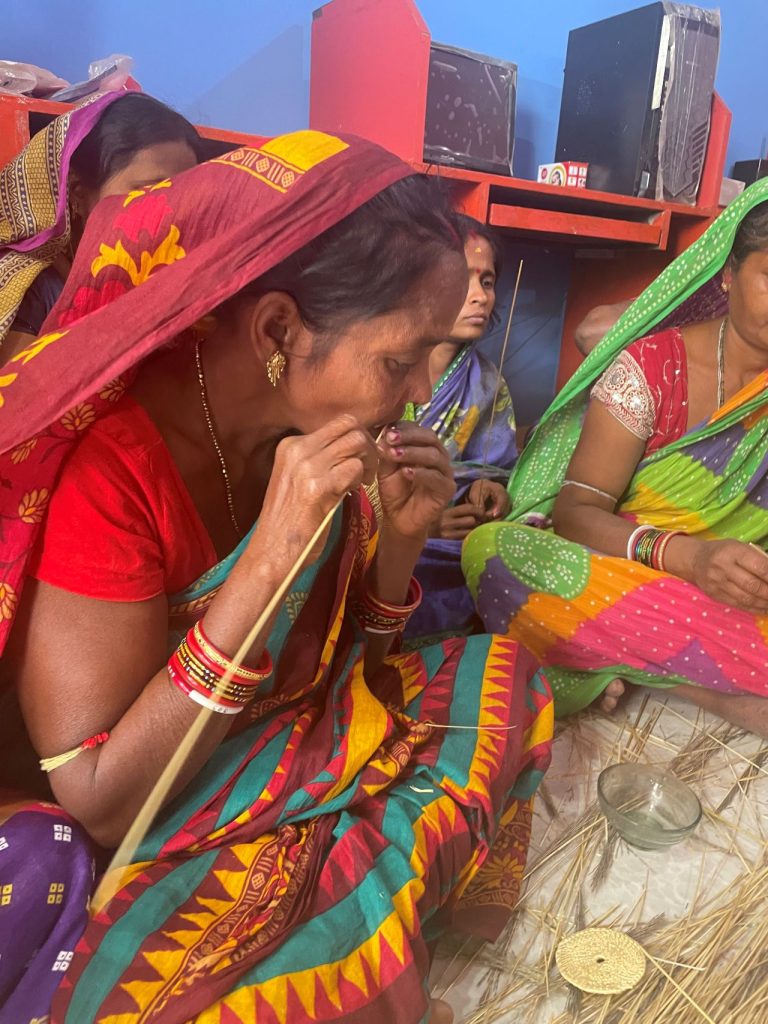
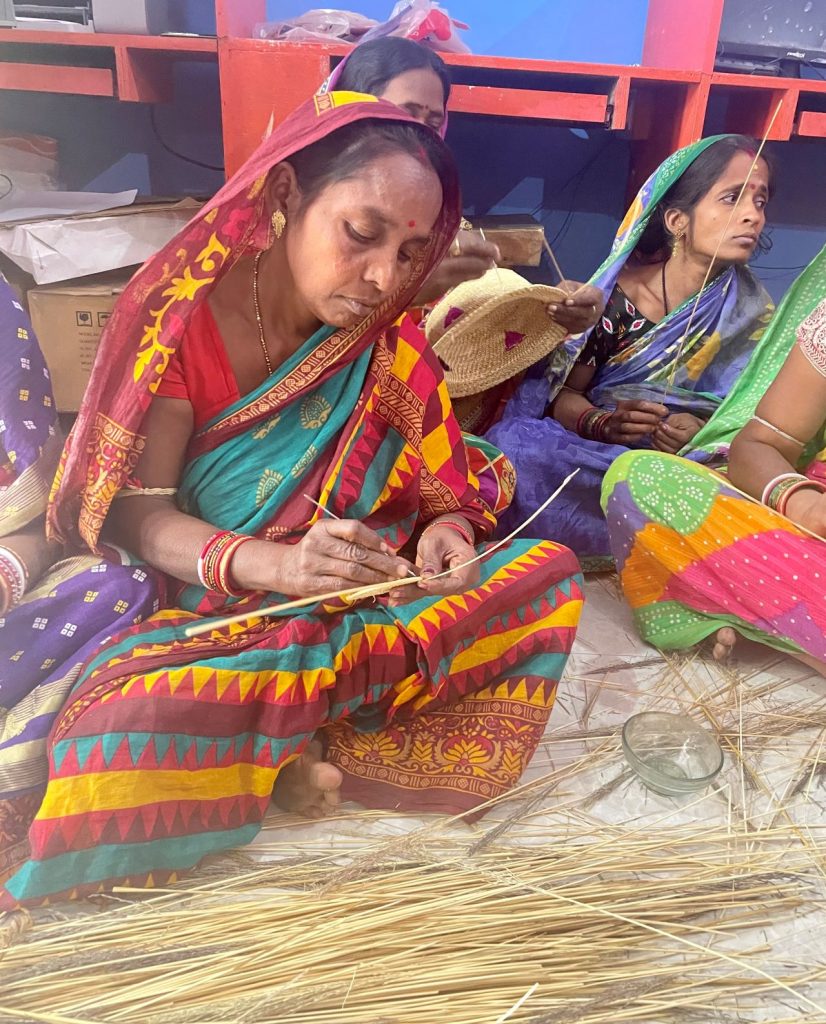
The yellow and golden dried grass is a reed called Kaincha that grows even up to 5-6 feet on river banks. The women usually grow in groups to collect the grass and then let it dry. As the colours change, it transforms from a light greenish to yellow to a golden yellow and the women then split the dried grass evenly, sometimes with their teeth and then use their deft fingers to intertwine them and weave them into crafts like mats, baskets, trays, coasters and even small boxes.
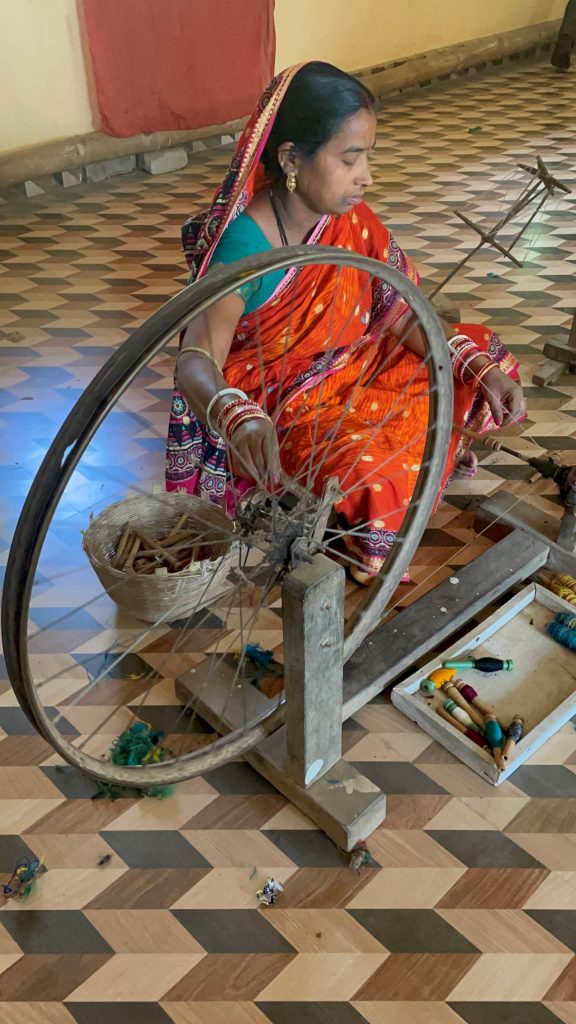
There are several other villages with talented artisans and sculptors, potters, and painters but every hamlet has its own story. While some of them have managed to find some voice through the Self Help Groups to reach wider audiences, others like the musicians are still waiting to be heard. Almost every village in Jajpur District is another Raghurajpur in making and is a treasure house of arts and crafts.
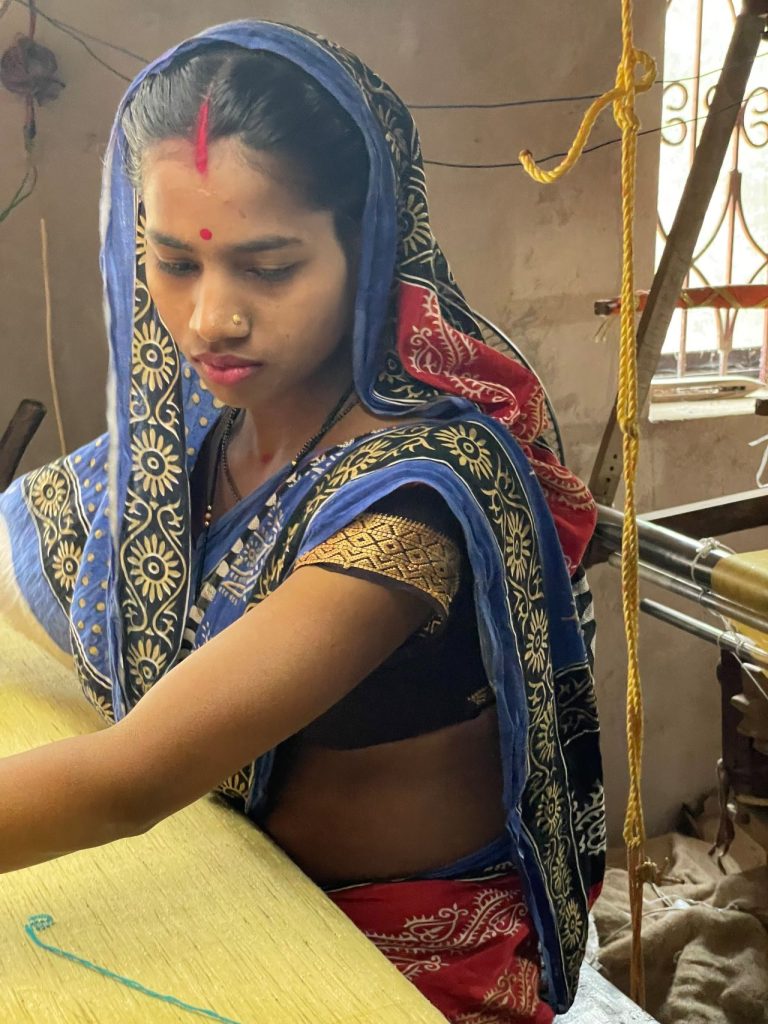
It’s heartening to note that Jajpur Administration is working at the grassroots level to promote the arts and crafts and focus on livelihoods and their consultants Ernst and Young ( E&Y) have created HACT Jajpur with the intention of promoting Jajpur district and its Heritage, Arts and Crafts and Culture and develop the tourism potential. While Giopalpur Tussar is slowly seeing worldwide renown, it’s encouraging to see several sustainable and responsible and rural tourism initiatives already being developed and the story of Jajpur and its craftsmen and women will soon be on the international level.
